[평화예술칼럼 Peace Art Column] (92) 우다퀀
제주도는 평화의 섬입니다. 항쟁과 학살의 역사를 가지고 있기에 평화를 염원하는 마음은 더욱 간절할 수 밖에 없습니다. 제주4.3이 그렇듯이 비극적 전쟁을 겪은 오키나와, 2.28 이래 40년간 독재체제를 겪어온 타이완도, 우산혁명으로 알려진 홍콩도 예술을 통해 평화를 갈구하는 ‘평화예술’이 역사와 함께 현실 속에 자리 잡고 있습니다. 이들 네 지역 예술가들이 연대해 평화예술운동을 벌이고 있습니다. 이들의 평화예술운동에 대한 창작과 비평, 이론과 실천의 공진화(共進化)도 매우 중요합니다. 독립언론 [제주의소리]가 네 나라 예술가들의 활동을 ‘평화예술칼럼(Peace Art Column)’을 통해 매주 소개합니다. 필자 국적에 따른 언어가 제각각 달라 영어 일어 중국어 번역 원고도 함께 게재합니다. [편집자 글]
예로부터 역병은 사람들의 마음속 깊은 곳에 있는 공포이며 사라지지는 않는다. 작은 미지의 세균이나 바이러스가 문명 진보에 큰 위협이 되는 것은 상상하기 어렵지만 역병이 가져오는 무수한 희생자는 기근과 전쟁, 자연재해의 그것을 능가한다. 문명의 발전에 따라 인류가 자원을 낭비함으로써 자연으로부터의 반격을 초래했다. 원래 자연계에 존재했던 다양한 바이러스나 세균이 항상 변이·증식하여 모든 생물의 생존과 미래 발전에 심각한 위협을 가하고 있으며 ‘인류세’의 시대에 우리는 문명을 발전시킴과 동시에 지구가 인간의 활동의 결과를 경고하고 있다는 것을 이해해야 한다고 진정으로 배운 것이다. 같은 역사가 세계 각지에서 펼쳐지고 있는데, 중세의 흑사병, 제1차 세계대전을 종결시킨 스페인 감기, 2003년 사스, 코로나 바이러스 등 모두 인류가 직면한 새로운 충격과 도전이었다.
최근 세계 역사상 최악의 유행에 직면한 가운데 코로나19 바이러스가 알파에서 델타, 그리고 현재 맹위를 떨치는 오미크론으로 변이했다. 전 세계적으로 수십억 명의 사람들이 격리 경험을 했고, 지금도 많은 의료진이 감염증과의 전쟁 최전선에서 분투하여 현재는 세계 정치·경제 시스템과 인간 생태계가 극적인 변화를 강요당하고 있다. 전 세계에서 5억4000만명 이상이 감염되고 630만명이 사망하면서 세계 경제는 헤아릴 수 없는 타격을 입고 있다. 대만 방역정책도 당초 제로정책에서 세계와 보조를 맞춘 합친 ‘바이러스 공존’으로 변화했다. 이 길은 결코 쉬운 것이 아니었다. 감염증세가 세계의 미래를 견인하고 있는 것이다.
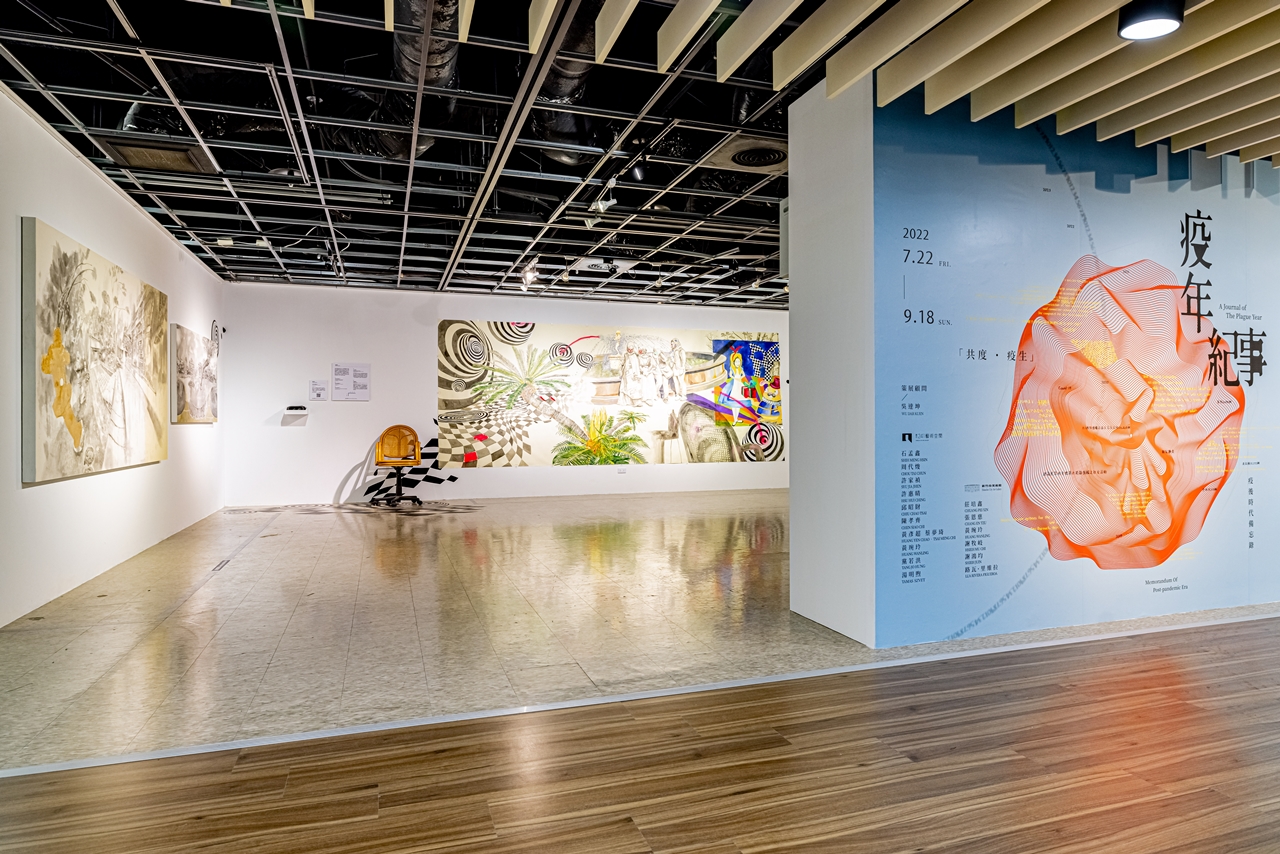
‘역병연대기’ 전은 유럽 소설의 아버지로 불리는 다니엘 데포가 1665년 페스트하의 런던을 무대로 다큐멘터리와 상상을 융합한 사상 최초의 흑사병 문학의 제목 ‘역병연대기’를 원용하며, 장면은 1665년 런던의 한 역병(瘟疫病)에 바탕을 두고 있다. 이 책에서 그려지는 흑사병은 속삭임 소리와 패닉으로 제어 불능이 될 때까지 만연하다. 미셸 푸코가 흑사병 시대 개인의 자유와 사회적 권리의 상호작용을 논했듯이 사회에 의한 환자의 감시, 격리, 접근통제는 개인 차이를 구별하기 위한 일련의 정밀화 장치를 형성하였다. 동시에 이 특수한 시대에 사회적 권력은 분화되고 개인의 주체성을 발전시키기 위한 조건을 제공했다.
현실과 허구의 텍스트가 더 이상 먼 존재가 아닌 일직선으로 수렴해 나갈 때 반복되는 역사는 역병 하에서의 삶과 공존의 패러다임을 바라보는 우리의 시선에 비추어 볼 수 있다. 왜, 어떤 팬데믹이어도 비슷하게 어떤 전개가 되는가? 2022년으로 돌아가면 역병의 유행으로 문화예술기관 운영과 예술생태계의 발전이 불확실성의 심연에 빠지면서 다양한 예술문학 분야의 실무자들도 예술창조활동과 일상생활에서 큰 영향을 받고 있다. 원래대로 돌아갈 수 없다면, 어떤 형태로 일상생활이 재가동될 것인가, 어떤 예술이 필요하고, 둘도 없는 긴급한 것이 될 것인가. 예술 기관은 전염병의 것을 이용하여 생활을 논하고 작가에게 발언을 요구하여 역병 후 시대에 어떻게 대처할 것인지를 연구하고 있다.
전시회에서 촉발된 상상력을 통해 작가와 기관은 보다 적극적으로 예술가, 일반 시민, 사회와 어떻게 소통할 수 있는가? 유행이 진행되면서 세계는 우리의 익숙한 경험칙에서 벗어나 현행 시스템이나 사회구조의 정신적 일체성도 수정된다. 포스트 에피데믹(Post Epidemic) 시대는 가상과 원격의 비율의 경계가 깨져 가상적인 선상에서의 인간의 생활체험 비율이 비약적으로 증가했다. 이 기술적인 강제격리가 문명사회와 자연 사이의 미끄러짐을 명명하게 증명하고 있다.


‘역병연대기’ 전은 15팀 16명의 작가를 초빙해 대만 신주미술관과 241예술공간에서 동시에 개최하는 전시회다. 작가들은 유행기에 직면한 다양한 문제들을 숙고하여 현재의 디지털 시대에 있어서의 빅데이터 생활의 변화를 기록함과 동시에, 스스로의 창조적·예술적 행위와 대화한다. 전시는 외계 탐사, 내관, 포스트 팬데믹 상생이라는 3가지 단계를 제시한다. 이 전시는 인간의 마음에 평온을 가져다주는 창작활동, 고난에 맞서는 공존의 길, 역병에 대처하기 한 긍정적 전략을 소개하고 포스트 에피데믹 시대 인간 세계의 미래를 추측한다. 이 전시에서는 아래의 소주제를 탐구하여 전시장을 둘로 나누었다.
I. 에피데믹 하의 생활: 외계 탐사
신주(新竹)미술관 야외에 설치된 루아 리베라의 작품 ‘황금나선(金色螺旋)’은 이 전시의 거시적인 또는 정확한 위치를 제안한다. 황금 염색체의 나선형은 인간 신체와 바이러스 진화의 문제로의 복수의 언급을 시사하여 에피데믹기에 예술은 다른 사상과 학제적 공헌의 가능성을 가지고 있는가? 본선 참가작가는 누구나 예술의 존재와 힘을 실천적으로 증명하고 있다. 시에쥔의 작품 ▲구겨진 기억 V ▲음성 공간-끝없는 해석은 에피데믹기에 작가의 개인적인 여성적 글을 설명하고 여성들의 여러 정체성의 창조적 행위와의 정신적 이야기를 시작한다. 시에쥔의 여성 정체성을 이어받은 창언추는 자수 설치 파편과 희망을 제작했다. 그것은 미술관의 1층과 2층에 부드러운 조각과 그래픽 자수를 퍼지고 증식하여 에피데믹 하의 사람들의 마음을 덮고 있다.
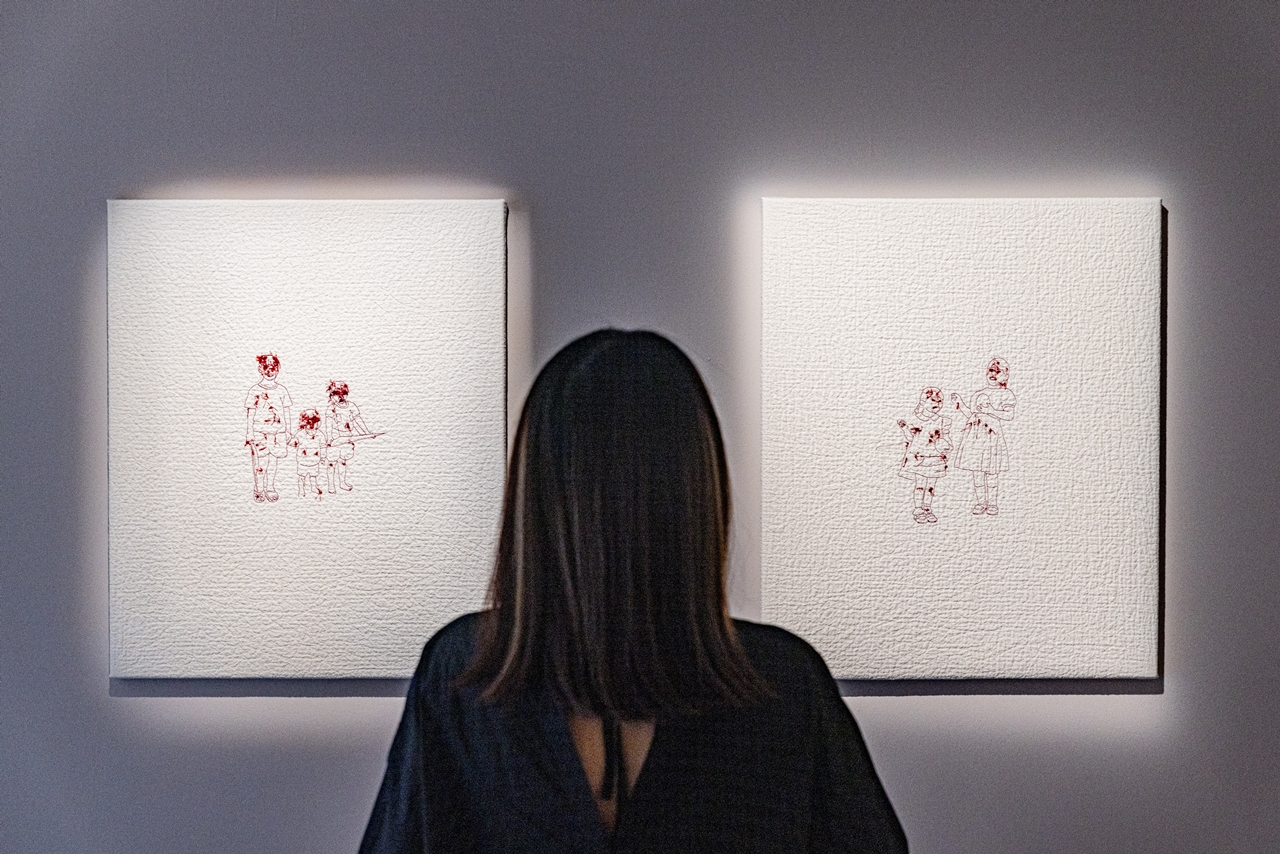
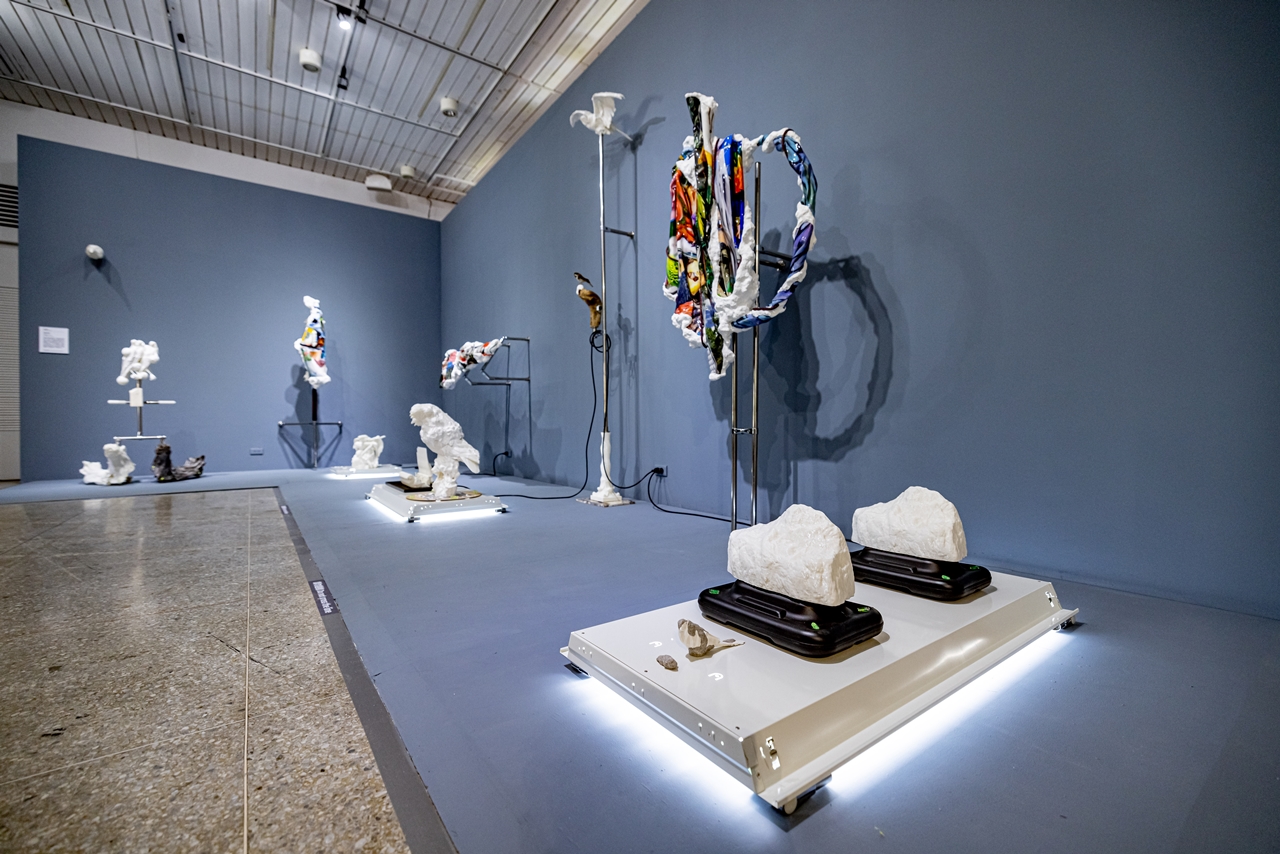
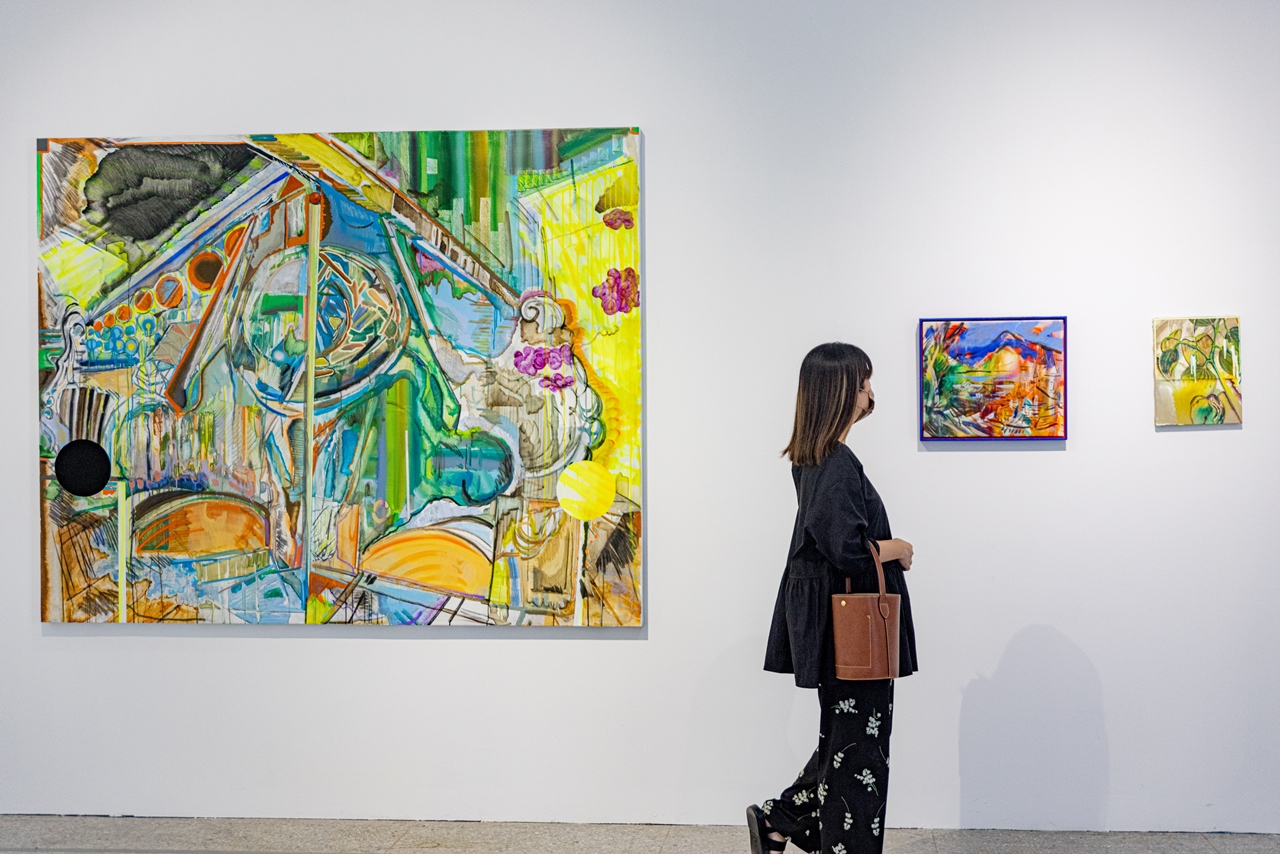
이 전시에서 신주미술관과 421예술공간 두 전시장에서 전시하는 유일한 크리에이터로서 후앙원링의 작품은 빼놓을 수 없는 존재다. 고대와 현대가 만나는 거리, 신추를 그녀는 여러 차례 찾았다. 그녀는 수묵화와 채색, 그리고 테크놀로지의 감각을 가진 VR 헤드셋을 이용하여 에피데믹기의 신추에서 복건, 객가, 외국인 이주노동자의 관계성을 안정과 투명성의 어려움을 제시하면서 적절하게 표현하였다. 시멍신의 작품 ‘전전(轉轉)’은 외벽 에어컨, 헤어살롱, 회전간판, 공장의 에어덕트 등 대만 건물에 자주 보이는 요소를 241예술공간에 연속 배치하여 검역격리기에 창문으로 보이는 한 거리의 풍경을 암시하는 듯하다. 쉬휘칭의 영상작품 ‘邊境漫遊’는 그녀의 객실 승무원 경험에서 유래했다. 좌우 대응 영상으로 구성되어 한쪽은 누군가에게 부탁받지만 이런 의상도 받아들이는 항공사 제복을 입은 늠름한 객실승무원이다. 다른 한 쪽은 음식을 몇 번이고 씹고 나서 뿜어내는 입술이다. 그 제어불능의 모습은 에피데믹 아래서 생활의 강렬한 대비와 갈등을 은유하다.
II. 내관: 심상 탐구
미술관 2층에서는 디지털 기술을 통해 생물을 코드화해 클라우드에 업로드하는 촹페이신의 설치가 전시되어 있다. 생명과 의식은 빅데이터로 변환되어 앱카드에 의해 의식의 불멸이 실현된다. 시에무치 회화의 주제는 대만 역사에서 다양한 장면의 이야기다. 그것은 작가가 항상 전복하고 재구축할 수 있는 대상이며, 마침 에피데믹하게 입각하여 인간처럼 어려운 도전, 자기부정, 재수정으로 가득하다.


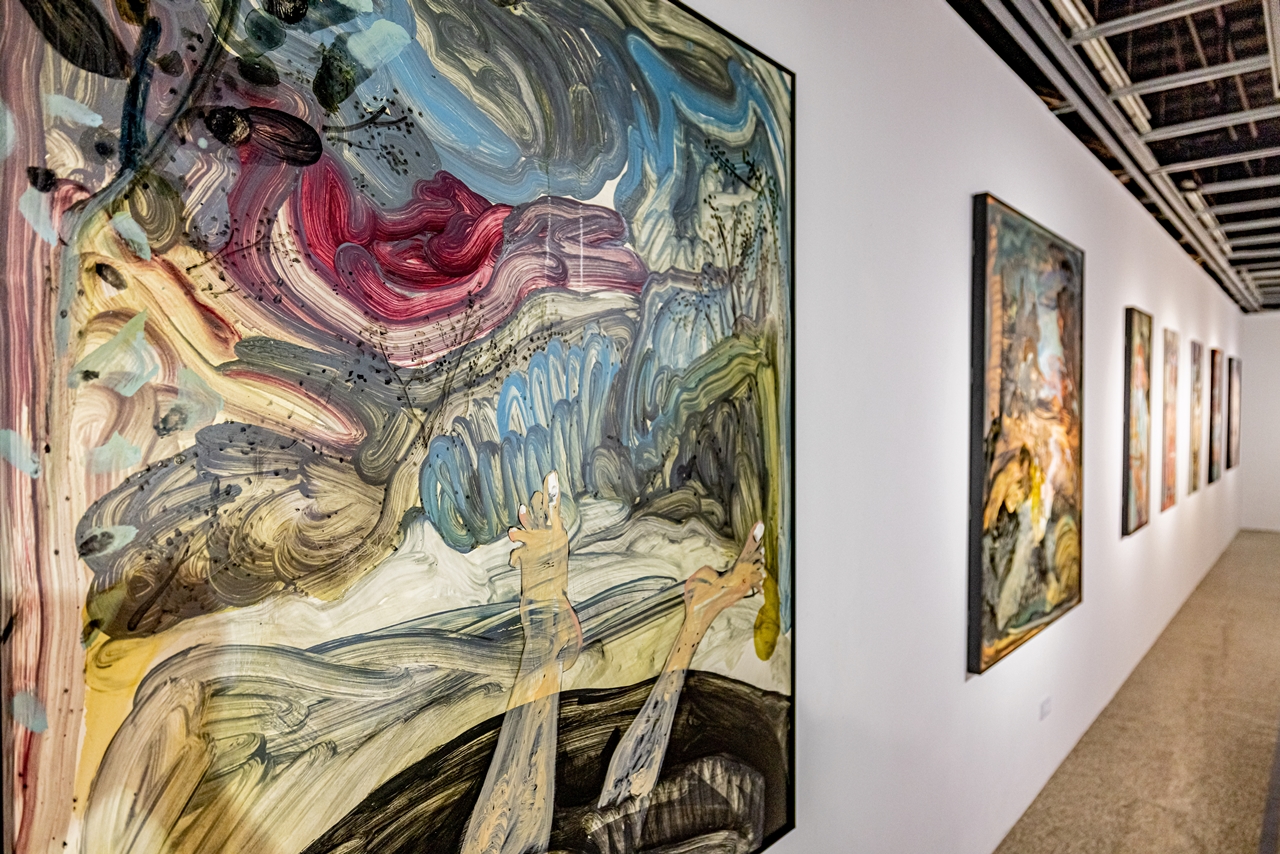
241예술공간으로 돌아가서, 초우타이춘은 에피데믹 유행기에 자신의 문화와 대만사에 대해 생각하는 시간이 늘어남에 따라 단편화된 대만 역사 리서치를 시작했다. 자신의 창작물을 이용해서 직선적인 시간축의 역사에 의문을 던지며 그 자신의 가변적인 시간과 공간을 쌓았다. 탕조흥의 그림은 독백과 그 투영으로서의 타인의 내적 과정을 바탕으로 하였다. 물감과 붓을 조작하여 칠하기와 끌기, 겹쳐 쌓기, 소용돌이 치기를 하면서 묘사된 장면과 사물이 끊임없이 나타나, 순식간에 새겨진 연대기가 된다. 어둠의 공간에서 작은 광점이 천천히 변위하여 정확하게 위치 맞춤을 하는 기계적인 움직임에 의해 광점은 유동적이고 불명명한 상태에서 시간을 쌓아 동결했다. 비주얼로 변화한다는 것은 구소재가 들여온 작품 ‘광.경’이다. 감상자는 신체의 지각 마음, 의식과 사고의 변화를 체험함으로써 피안에 도달할 수 있다. ‘정사일품(情事絶品)’은 츄차오차이가 가족 사진첩을 열었을 때 나눈 아버지와의 비밀스러운 대화다. 가족 사진을 계시삼아 그녀는 자신의 성장 경험을 분석하고 개인적인 감정과 가족을 마주하는 여정을 그린 작품 물건이다. 아버지가 동생에게 물려준 안경점은 전염병의 영향으로 더 이상 존속하지 않을지도 모른다.
Ⅲ. 상생 : 공존
헝가리 출신의 작가 타마스 스츠벳은 매우 인터랙티브한 ‘Art Gym’을 전 열람회에 들여왔다. 역병의 영향으로 많은 체육관이 문을 닫아야 했지만, 이 작가는 특수한 형태의 운동기구를 여러 개 제작해 관람객들의 신체적·심리적 감각을 자극했다. 말과 그 배후에 어떤 의미에서 감상자는 문화와 운동 모두에서 영감과 에너지를 얻는다.
퍼포먼스를 잘하는 천샤오치는 신주를 여행했을 때의 영상을 제작했다. 신주에 있는 인형의 입간판이나 예술적 행위를 영상으로 기록하고, 작가의 시뮬레이션은 도시에 인공적인 풍경 개입을 가져온다. ‘동먼은 꿈, 타이페이는 사랑’을 공동 제작한 후앙옌차오+차이멍치는 의식의 깊은 곳에서 꿈과 다시 연결되고 소환되어 매우 화려하고 다른 동문 시장의 우아함을 창조하고, 유행병인 낭만적인 젊음의 재등장 아래 다른 사람들에게 두 작가의 투영이 되어 그곳을 색칠할 계획이라고 선언했다. 아울러 교육 프로그램에서는 그래픽 디자이너이자 요가의 손가락 지도자이기도 한 스텔라 시를 초청하여 다마스의 작품 ‘Art Gym’에서의 신체와 마음의 공존에 호응하는 몰입형 요가 체험 ‘Dream Yoga’를 개최한다.

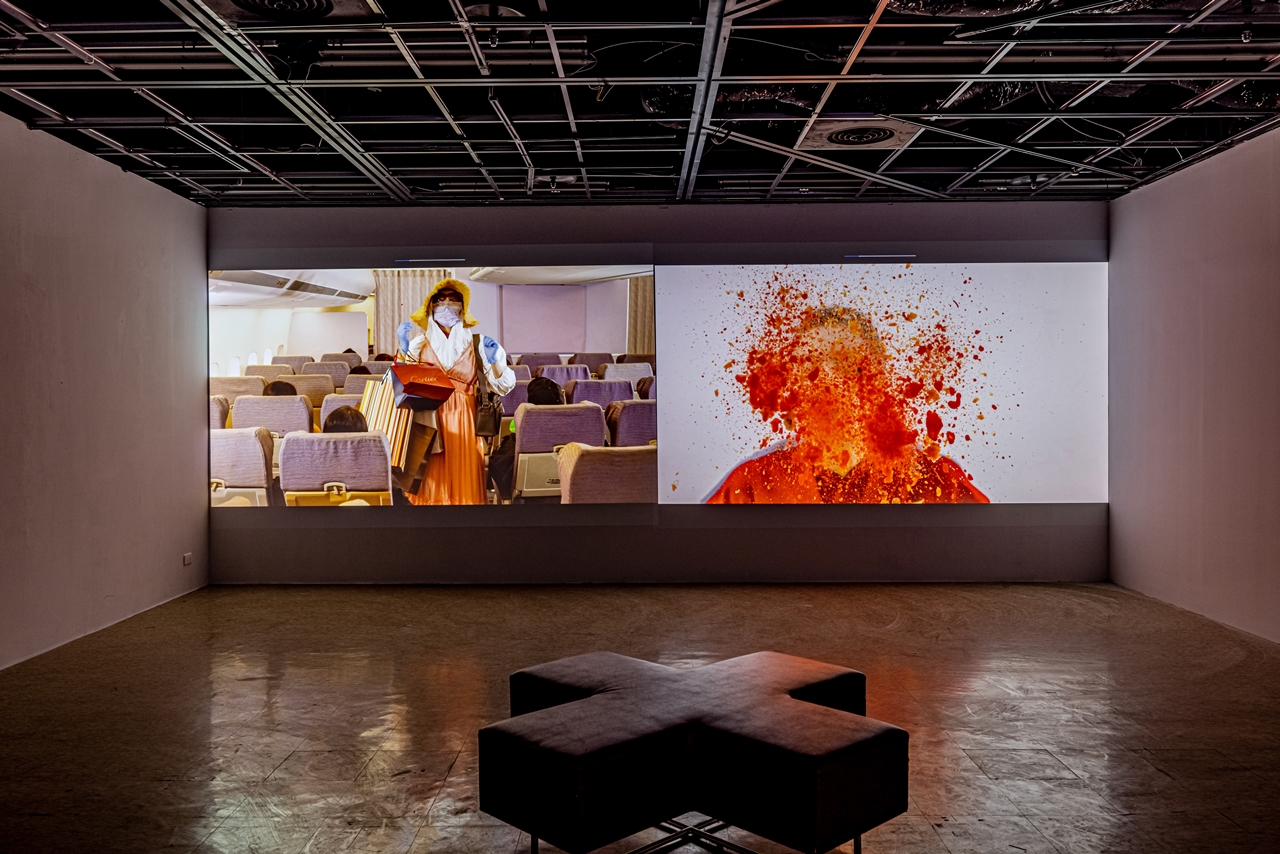

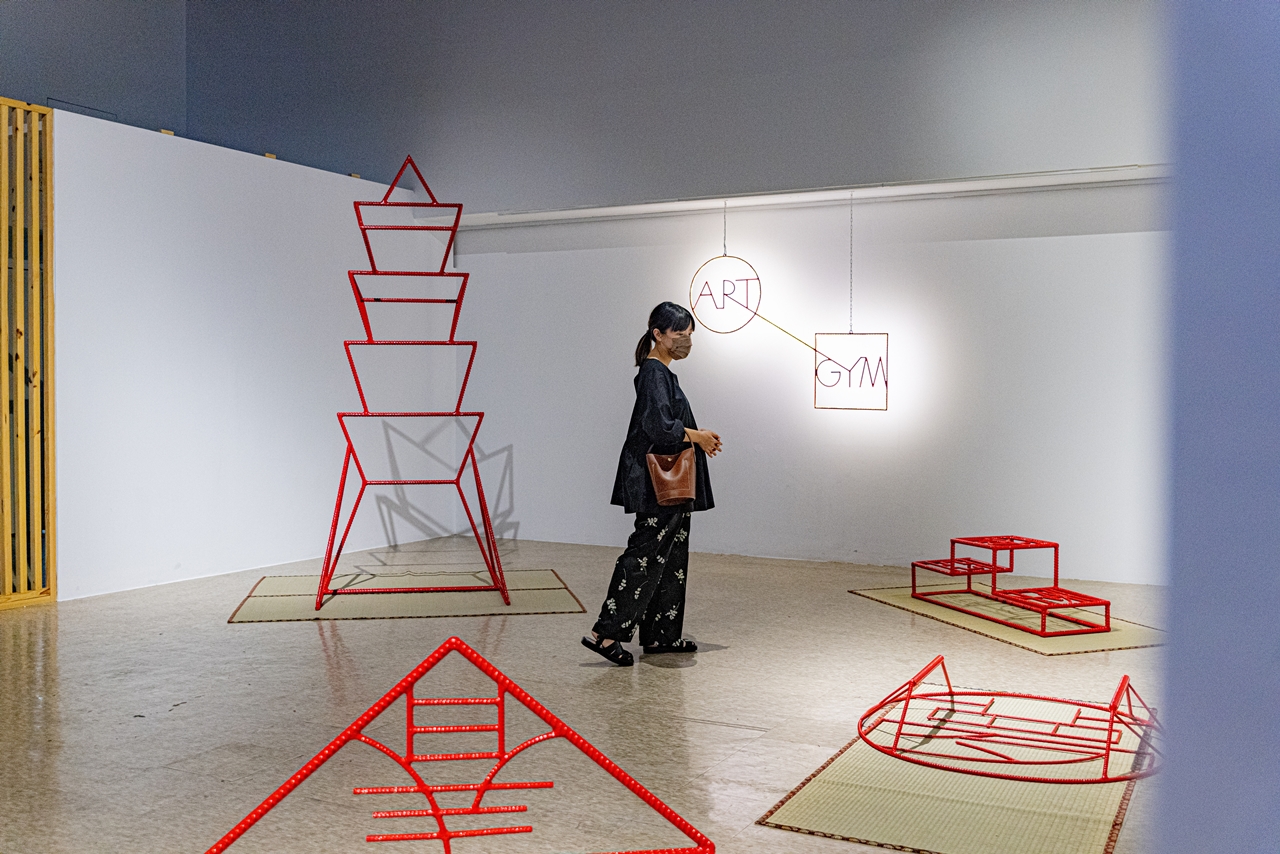
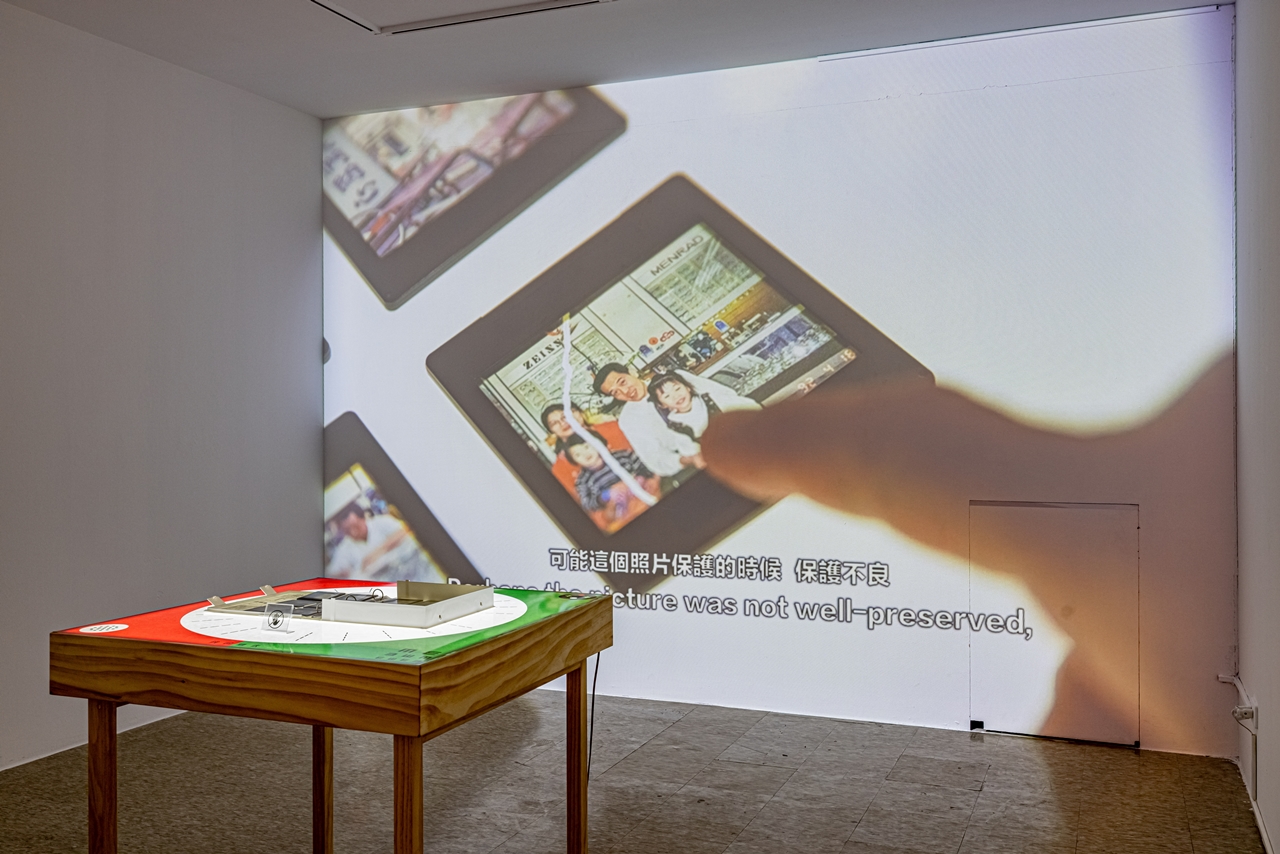
아티스트는 마음속에 청명하고 잔잔한 곳을 찾으면서 창작을 통해 우리를 에피데믹의 저편으로 이끌고 공생을 창출한다. 어려운 시대일수록 예술이 어떻게 사람들을 치유할 수 있는지를 생각해 볼 필요가 있다. 에피데믹의 다양한 전개에 우리가 얼마나 낭비나 게으름을 줄이고 적응할 수 있을까를 생각하고 예술의 너그러움과 편안함을 재고한다. 항상 변화하는 유동적인 세계에서 우리는 결연함과 자신감을 가지고 대처하고 냉정하게 바이러스와 마주하며 함께 배우고, 예술의 힘으로 강인한 정신을 가지며, 그리하여 에피데믹 후의 공존 공생을 향해서 나아가야 한다.
전시기간: 2022년 7월 22일(금) ~ 9월 18일(일)
큐레이토리얼 컨설턴트: 우다퀀
신추미술관: 창은추, 시예무치, 후앙완링, 추앙페이신, 시예주인, 루아 리베라 피구에로아
241갤러리: 쉬멍신, 초우타이춘, 슈지아전, 천샤오치, 후앙예차오, 차이멍치, 츄창차이, 후앙완링, 탕초흥, 수휘칭, 타마스 스벳
주최: 신주시
주관: 신주시 문화국
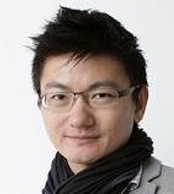
# 우다퀀(吳達坤, WU Darkeun)
타이페이국립미술대학을 졸업한 후 타이페이예술대학 '관두미술관' 큐레이터, 대안공간 'VT ARTSALON' 디렉터, '타이페이국제예술촌' 디렉터 등을 역임했습니다. 현재 타이페이 소재 복합문화공간 'C-LAB(Taiwan Contemporary Culture Lab)' 수석큐레이터로 일하고 있습니다.
疫年紀事 --- 疫後時代備忘錄
文/吳達坤
自古以來,疫病即是人心中最深沉的恐懼,揮之不去。
難以想像微小未知的細菌、病毒居然能成為文明進步的巨大威脅,疫病帶來無以數計的死傷超越饑荒、戰爭跟天災。伴隨文明的演進,人類對資源的肆意消耗引發了大自然的反撲,各種原先存在自然界的病毒、細菌也不停演化變種增生,對所有生物的生存和未來發展構成嚴重的威脅。在步入「人類世」的時代,我們真正的學習到在發展文明的同時,也必須理解地球正是警示人類活動帶來的後果。似曾相似的歷史不斷在世界各地上演,我們熟知的中古世紀的黑死病、上世紀終結一次世界大戰的西班牙大流感、2003年的 SARS冠狀病毒皆是人類面臨疫情的新衝擊和挑戰。面對全球近代史上最嚴重的疫情, COVID-19病毒由初期的Alpha變異到 Delta再到目前肆虐的 Omicron 變異株,全球數十億人被迫經歷隔離,許多醫護人員仍在抗擊傳染病的前線奮戰。時至今日,迫使全球政經體制與人類生態系巨變驟生。全球超過5.4億人受到感染,630萬人病歿,更照成難以估計的世界經濟災難。台灣的防疫政策也從初期「清零政策」走向與全球接軌的「病毒共存」,這段漫長旅程得之不易。一場疫情,牽引著世界的未來。
《疫年紀事》引用史上第一部瘟疫文學《大疫年紀事》,歐洲小說之父丹尼爾‧狄福(Daniel Defoe)融合紀實與想像的小說,場景設定於1665年倫敦的一場瘟疫。書中描述的疫情與耳語、恐慌不可收拾的蔓延。正如傅柯(Michel Foucault)對瘟疫時期個人自由與社會權利交互過程的論述,社會對病患的監控、隔離及通行控制形成了一系列精細化措施,用以區分個體差別。同時,社會權力在這個特殊時期分化,並為個人主體性的發展提供了條件。當現實與小說文本不再遙遠成為趨同交會的直線,反覆發生的歷史,牽涉著我們看待疫下生活與共處模式。為何每個大疫之年發展皆如此似曾相似?回到2022年,隨著疫情演變,文化藝術機構的運作和藝術生態發展陷入不確定的深淵,各藝文領域的從業者在藝術創作活動及日常生活也受了巨大影響。如果說「回不去了」將是持續滾動的疫常狀態,日常將以何種型態重新被運作,而什麼樣的藝術又是必要、無可取代且刻不容緩的?藝術機構藉由疫情本身來討論生活,邀請藝術家現身說法,並研究疫後時代的應對之道,藉由這檔展覽激發的想像,藝術家與機構又將如何更積極地與藝術家、公眾與社會對話與連結? 隨著疫情演變,世界亦脫離我們熟知的經驗法則,從現行制度到社會結構的精神總體也隨著滾動修正。後疫情時代打破讓虛擬、遠距的比重界線,人類在虛擬線上的生命經驗佔比大幅增加,這種被迫隔離的科技樣貌,見證文明社會與自然之間的滑移。
《疫年紀事》展覽邀請了15組共16位藝術家們參展,跨越新竹美術館、241藝術空間雙館同步展出。藝術家們思索疫情期間遭遇的各項議題,除了對當下數位時代大數據生活的改變進行紀事,以自身的創作與藝術行為對話。藉由外在觀察、內心沈澱與疫後共生三階段呈現。藉由藝術家展現創作過程中帶來平靜人心的堅韌意志,堅毅面對困頓的共存之道,並探討疫情下的積極應對策略,推測後疫情時代的未來的人類世。本展探討以下子題,將作品分佈羅列雙展館呈現:
一、疫生 :外在考現
路瓦·里維拉( Lua Rivera )位於新竹美術館外的作品《金色螺旋 》為本展提出宏觀且精準的定位,金色染色體的螺旋外型寓意著⼈類世與病毒演化議題的多重指涉,在疫情時代下「藝術」是否具備其他思想與跨學科貢獻的可能︖ 這展覽的每一位參展藝術家皆以實際行動證明著藝術的存在力量。謝鴻均的作品《記憶的皺褶》、《陰性空間-未能終結篇》闡釋創作者面對疫情時代的個人陰性書寫,以女性多重身份的創作勞動展開心靈對話。延續謝鴻均的女性身份,張恩慈的作品則以布料針線縫製出裝置作品《碎片與希望》,以軟雕塑跟平面繪繡,蔓延增生在美術館一、二樓空間之中,一針一線柔軟的纖細包覆疫情下的人心。
作為本展唯一跨越美術館與421空間兩場地的創作者,黃婉玲的作品成為不可或缺的存在。疫情期間多次造訪新竹這座古今交會之城,她應用擅長的水墨設色與具備科技感的VR頭顯,恰如其分呈現出疫情中閩、客族群與外籍移工在新竹這座古今之城難得察覺的安適與清明。石孟鑫的「轉轉」將台灣建築常見的外牆空調主機、髮廊旋轉招牌、廠房風管作為元素串接安置於241展場,似乎暗喻疫情隔離期從窗外望出的單一城市景像。許惠晴的《邊境漫遊》錄像源自擔任空姐的工作經驗,由左右兩側對應錄像構成,一位是穿著航空制服的端莊空姐毫無抵抗能力的接受任何旁人要求她穿上的衣物,一位口腔反覆咀嚼食物並噴射出去的失控樣貌,隱喻疫情下生活的強烈對比與抗衡。
二、內觀:心象探尋
美術館二樓展區,莊培鑫展出裝置的製作以數位技術將生物轉化成編碼的型態上傳雲端,生命與意識被轉譯成大數據,意識上載達成永恆不朽。謝牧岐繪畫中的寫生對象是台灣歷史中的各個場景敘事,它是個能讓藝術家不斷推翻又重新建構的對象,如同人類面對疫情,充滿艱困挑戰與自我否定再修正的追尋。
回到241展區,周代焌在疫情間有更多時間思考自身文化與歷史的課題,便開啟關於島嶼碎片化歷史的研究,他用創作提出關於直線時間軸的歷史提問,堆疊出自身的可變時空;黨若洪的繪畫則以自我對話與他者的內觀歷程作為投射,當顏料與畫筆被操控、塗抹、拖曳、疊加、迴旋的過程中,一個個場景、描繪對象歷歷顯現,霎那間被銘刻紀事。在黯黑空間中,一個微小光點緩緩位移,精確對位的機械運行,光點由流動的未明狀態到時間堆疊的定格顯像,這是邱昭財帶來的作品《光.景》。巧妙的牽引觀者去經驗身體感知、心念識想的變化,成就一片彼岸。《情事絕品》是許家禎是打開家族相簿與父親的秘密對話,藉著家庭相簿作為靈感,展開一段頗析成長經驗,面對個人情感與家庭的旅程。父親交給弟弟繼承的眼鏡行,或許將伴隨著疫情衝擊不復存在。
三、共生:共存
匈牙利籍的藝術家湯明煦(Tamas Szvet)為本展帶來互動性極高的《藝術健身房》,因疫情下許多健身房被迫關閉。藝術家製作了多件特殊造型的鍛鍊器材,同時刺激參觀者的生理和心理。使用文字與背後的意涵,觀者可以同時在文化與運動中找到靈感和活力。擅長展演行為創作的陳孝齊,製作了全身肖像在新竹旅行錄像。運用影像記錄人形立牌跟新竹場域的藝術行動,藝術家擬像的身影為城市帶來人為造景介入節點。黃彥超+蔡夢琦兩位合作的《東門是場夢,台北沒有愛》,重新連結通往並召喚意識深處的夢境,創造出非常華麗異己的東門市場風華,成為疫情下兩位作者對他處投射的浪漫青春再現,藝術家們宣稱這是對地方上色的計劃。同時,本展在教育活動上並邀請身兼平面設計師與瑜伽老師的石岱芸,為本展規劃一套沉浸式瑜珈體驗《 Dream Yoga 》,與湯明煦(Tamas Szvet)的《藝術健身房》一靜一動,呼應身體與心靈空間的共存狀態。
藝術家們以創作帶領我們跨越疫情,尋覓心境上一方清明靜謐,與之共處。在越是艱困的時光裡,思索著藝術如何自癒癒人,在疫情的不同發展情況之下,做出生活調適減少虛耗與空轉,讓我們在藝術的包容撫慰之下重新認知。在不斷變動、流變的世界中,以堅韌自信的態度來從容應對、共同學習與病毒共存,藉由藝術的力量帶給我們堅韌強大的心靈,一齊走向共存共生的疫後進行式。
展期|2022/7/22 (五) – 9/18 (日)
策展顧問|吳達坤
美術館展區|莊培鑫、張恩慈、黃琬玲、謝牧岐、謝鴻均、路瓦 里維拉Lua Rivera Figueroa。
241展區|石孟鑫、周代焌、許家禎、許惠晴、邱昭財、陳孝齊、黃彥超、蔡夢琦、黃琬玲、黨若洪、湯明煦 Tamas Szvet。
主辦單位|新竹市政府
承辦單位|新竹市文化局
A Journal of the Plague Year --- Memorandum of Post-pandemic Era
Text / Wu Dar-Kuen
Since ancient times, the disease has been the deepest fear in people's hearts, which lingers on.
It is hard to imagine that tiny unknown bacteria and viruses can become a huge threat to the progress of civilization. The countless casualties caused by epidemics surpass famine, war and natural disasters. With the evolution of civilization, the wanton consumption of resources by human beings has triggered a counterattack from nature. Various viruses and bacteria that originally existed in nature are constantly evolving and multiplying, posing a serious threat to the survival and future development of all living things. In the era of the "Anthropocene", we have truly learned that while developing civilization, we must also understand that the earth is a warning of the consequences of human activities. Similar histories continue to be staged all over the world. The Black Death in the Middle Ages, the Spanish flu that ended World War I in the last century, and the SARS coronavirus in 2003 are all new shocks and challenges facing human beings. In the face of the most serious epidemic in the modern history of the world, the COVID-19 virus has changed from the initial Alpha mutation to Delta to the currently raging Omicron mutation. Billions of people around the world have been forced to undergo isolation, and many medical staff are still on the front line of fighting the infectious disease. fight. Today, the global political and economic system and the human ecosystem have undergone tremendous changes. More than 540 million people around the world have been infected and 6.3 million people have died, making it an unpredictable global economic disaster. Taiwan's epidemic prevention policy has also shifted from the initial "zero policy" to the "virus coexistence" that is in line with the world. This long journey has not been easy. An epidemic is driving the future of the world.
"A Journal of the Plague Year" refers to the first plague literature in history, "A Journal of the Plague Year", a novel by Daniel Defoe, the father of European novels, which combines documentary and imagination. The scene is set in a plague in London in 1665. The epidemic described in the book spreads uncontrollably with whispers and panic. Just as Michel Foucault's discussion of the interaction process of individual freedom and social rights during the plague period, the society's monitoring, isolation, and passage control of patients formed a series of refined measures to distinguish individual differences. At the same time, social power was differentiated in this special period and provided conditions for the development of individual subjectivity. When reality and fictional texts are no longer distant and become a straight line of convergence, the recurring history involves how we view life and coexistence under the epidemic. Why is the development of each pandemic year so similar?
Back in 2022, with the evolution of the epidemic, the operation of cultural and art institutions and the development of art ecology have fallen into an abyss of uncertainty, and practitioners in various art and literature fields have also been greatly affected in their artistic creation activities and daily life. If it is said that there is no going back, it will be a constant rolling epidemic. In what form will daily life be re-operated, and what kind of art is necessary, irreplaceable, and urgent? Art institutions use the epidemic itself to discuss life, invite artists to speak out, and study how to deal with the post-epidemic era. With the imagination inspired by this exhibition, how can artists and institutions more actively communicate with artists, the public and society? As the epidemic evolves, and the world deviates from the rules of thumb we are familiar with, the spiritual generality from the current system to the social structure is also revised rolling. The post-epidemic era has broken the boundary of the proportion of virtual and remote, and the proportion of human life experience on the virtual line has increased significantly. This technological appearance of forced isolation witnesses the slippage between civilized society and nature.
The "A Journal of the Plague Year" exhibition invited 15 groups of 16 artists to participate in the exhibition, which spanned the Hsinchu Art Museum and the 241 Art Space. Artists pondered various issues encountered during the epidemic. In addition to chronicling the changes in the life of big data in the current digital era, they also used their own creations and artistic behaviors to dialogue. It is presented through three stages of external observation, inner precipitation, and post-epidemic symbiosis. Through the artist's demonstration of the perseverance that brings calmness to people's hearts in the process of creation, the way to coexist in the face of hardships with determination, and discuss the active coping strategies under the epidemic, and speculate on the future Anthropocene in the post-epidemic era. This exhibition explores the following sub-themes, and presents the distribution of works in the dual galleries:
1. Life under the epidemic: external examination
Lua Rivera's work "Golden Spiral" installed outside the Hsinchu Art Museum proposes a macro and precise positioning for the exhibition. The spiral shape of golden chromosomes implies multiple references to the issue of the Anthropocene and virus evolution, in the era of epidemic, does "art" have the possibility of other ideas and interdisciplinary contributions? Every participating artist in this exhibition proves the existence and power of art with practical actions. “Crumpled Memory V” and” Chora-Endless Interpretation" by Juin SHIEH explains the creator's personal feminine writing in the era of the epidemic, starts a spiritual dialogue with the creative labor of women's multiple identities. Continuing Juin SHIEH's female identity, CHANG En-Tzu's work uses fabric needlework to sew the installation " Ruins and Prospects”, with soft sculpture and embroidery, it spreads and proliferates in the space on the first and second floors of the art museum, covering with soft-slender stitches hearts of people under the epidemic.
As the only creator of this exhibition that spans the two venues of the Art Museum and 421 Space, Huang Wanling's works have become an indispensable presence. During the epidemic, she visited Hsinchu, a city where ancient and modern meet for many times. She used the ink painting and coloring she is good at and the VR headset with a sense of technology to appropriately present the relationship between Fujian, Hakka and foreign migrant workers in this ancient and modern city of Hsinchu during the epidemic. Presenting a difficult of peace and clarity. SHIH Meng Hsin's "turn turn" uses the external wall air conditioners, hair salon rotating signboards, and factory air ducts that are common in Taiwanese buildings to be placed in the 241 galleries in series, which seems to imply a single city scene seen from the window during the quarantal period. HSU Hui-Ching's "Border Roaming" video is derived from her work experience as a flight attendant. It consists of left and right dual- videos. One is a dignified flight attendant in aviation uniform who has no resistance to accept any clothes that others ask her to wear, and the other is oral. The out-of-control appearance of chewing food repeatedly and spraying it out is a metaphor for the strong contrast and confrontation of life under the epidemic.
2. Vipassana: Exploring mental images
In the exhibition area on the second floor of the art museum, the production of CHUANG Pei-Xin’s installations uses digital technology to transform living things into encoded forms and upload them to the cloud. Life and consciousness are translated into big data, and the uploading of consciousness achieves immortality. The objects of HSIEH Mu-Chi's paintings are the narratives of various scenes in Taiwan's history. It is an object that allows the artist to constantly overthrow and rebuild. Just like the human beings facing the epidemic, they are full of difficult challenges, self-denial and re-correction.
Back in the 241 Gallery, CHOU Tai-Chun had more time to think about his own culture and Taiwanese history during the epidemic, so he started the research on the fragmented history of the island. He used his creation to ask historical questions about the linear timeline, stacking his own variable time and space. TANG Jo-Hung's paintings are based on self-talk and the inner process of others as projections. When the paints and brushes are manipulated, smeared, dragged, superimposed, and swirled, scenes and objects of description appear continuously, and in an instant, become an inscribed chronicle.
In the dark space, a tiny light spot is slowly displaced, the mechanical movement of precise alignment, the light spot changes from a flowing, unknown state to a time-stacked freeze-frame visualization. This is the work "Light. Scenery" brought by CHIU Chao-Tsai. Cleverly leads the viewer to experience the changes in body perception, mind, consciousness, and thoughts, and achieve the other side. "Best Love" is SYU, Jia-Jhen's secret dialogue with his father when he opened the family album. Using the family album as inspiration, she started a journey of analyzing her growth experience and facing her personal emotions and family. The glasses shop that my father handed over to her younger brother may no longer exist due to the impact of the epidemic.
3. Symbiosis: Coexistence
Hungarian artist Tamas Szvet brings the highly interactive "Art Gym" to the exhibition. Many gyms were forced to close due to the epidemic. The artist made a number of specially-shaped exercise equipment, which stimulated the visitors' physical and psychological at the same time. Using the words and the meaning behind them, viewers can find inspiration and energy in both culture and movement. CHEN Siao-Chi, who is good at performing performance creation, made a full-body portrait travel video in Hsinchu. Using images to record human-shaped standing signs and artistic actions in the Hsinchu field, the simulacrum of the artist brings artificial landscaping to the city. HUANG Yen-Chao+ TSAI Meng-Chi, collaborated on "Dongmen is a dream, Taipei has no love", reconnecting to and summoning the dream in the depths of consciousness, creating a very gorgeous and dissimilar Dongmen market elegance, and becoming the projection of the two authors to others under the epidemic The romantic youth reappearance, the artists proclaimed as a plan to colour the place.
At the same time, the exhibition invited stella SHIH, who is also a graphic designer and yoga teacher, to plan an immersive yoga experience "Dream Yoga" for the exhibition in educational activities. echoing the coexistence of body and mind space.
Artists lead us through the epidemic with their creations, looking for a clear and peaceful place in the state of mind, and coexisting with them. In the more difficult times, we need think about how art can heal people by itself. Under the different development conditions of the epidemic, we make life adjustments to reduce wastage and idling, so that we can re-understand under the tolerance and comfort of art. In the ever-changing and changing world, with a tenacious and confident attitude, we should calmly deal with the virus, learn together and coexist with the virus, and use the power of art to bring us a tough and strong mind, and move towards the post-epidemic progression of coexistence and symbiosis together.
Exhibition Period|2022/7/22 (Fri) – 9/18 (Sun)
Curatorial Consultant|Wu Dar-Kuen
Hsinchu Art Museum Exhibition Area|Chang En-Tzu, HSIEH,Mu-Chi, Huang Wanling, CHUANG Pei-Xin, SHIEH Juin, Lua Rivera Figueroa.
241 Gallery|Shih Meng-Hsin, CHOU, Tai-Chun, SYU, Jia-Jhen, CHEN Siao-Chi, HUANG Yen-Chao、TSAI Meng-Chi, CHIU Chao-Tsai, Huang Wan-ling, TANG Jo-Hung, HSU Hui-Ching,Tamas Szvet.
Organizer|Hsinchu City Government
Organizer|Hsinchu City Cultural Bureau

